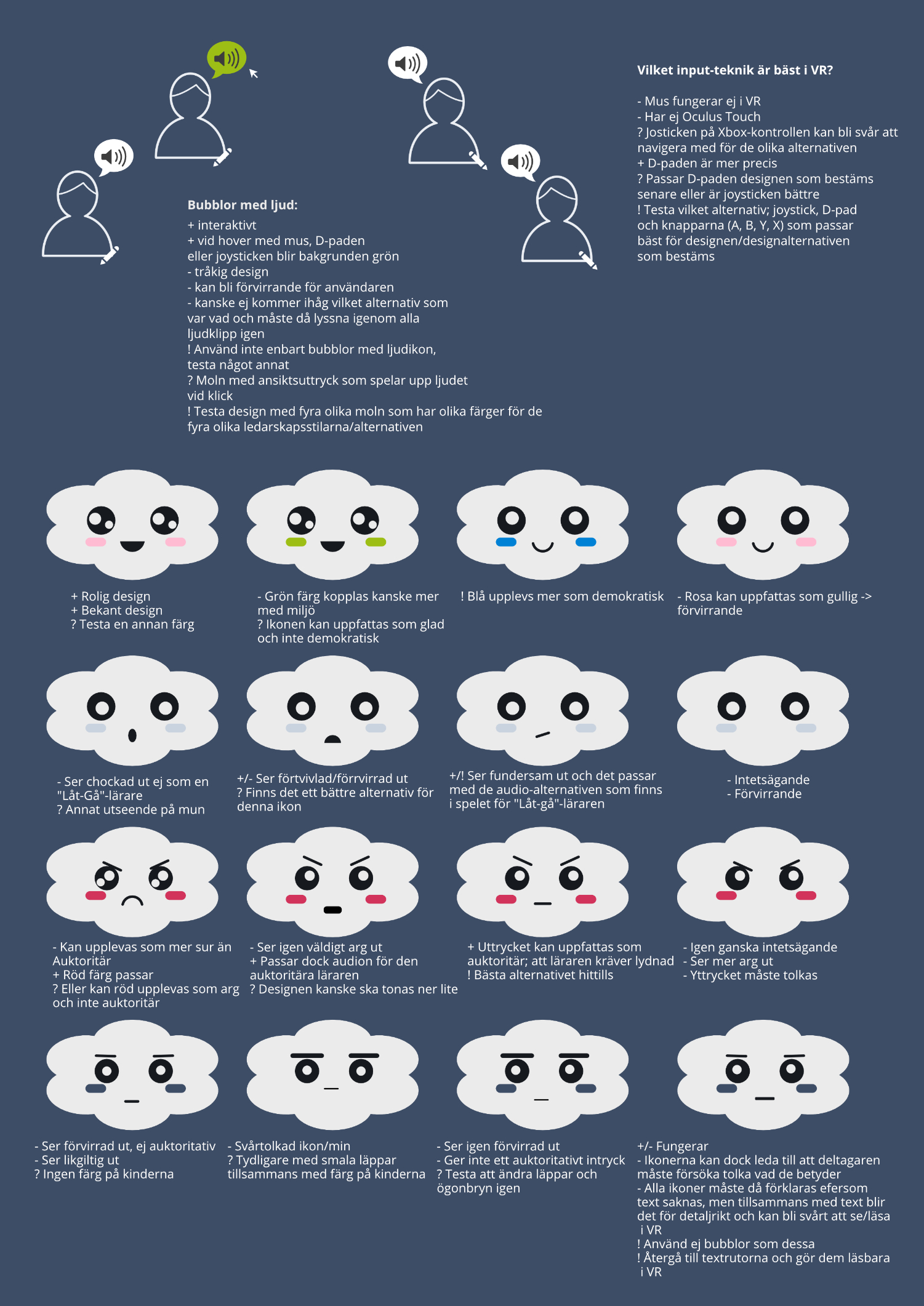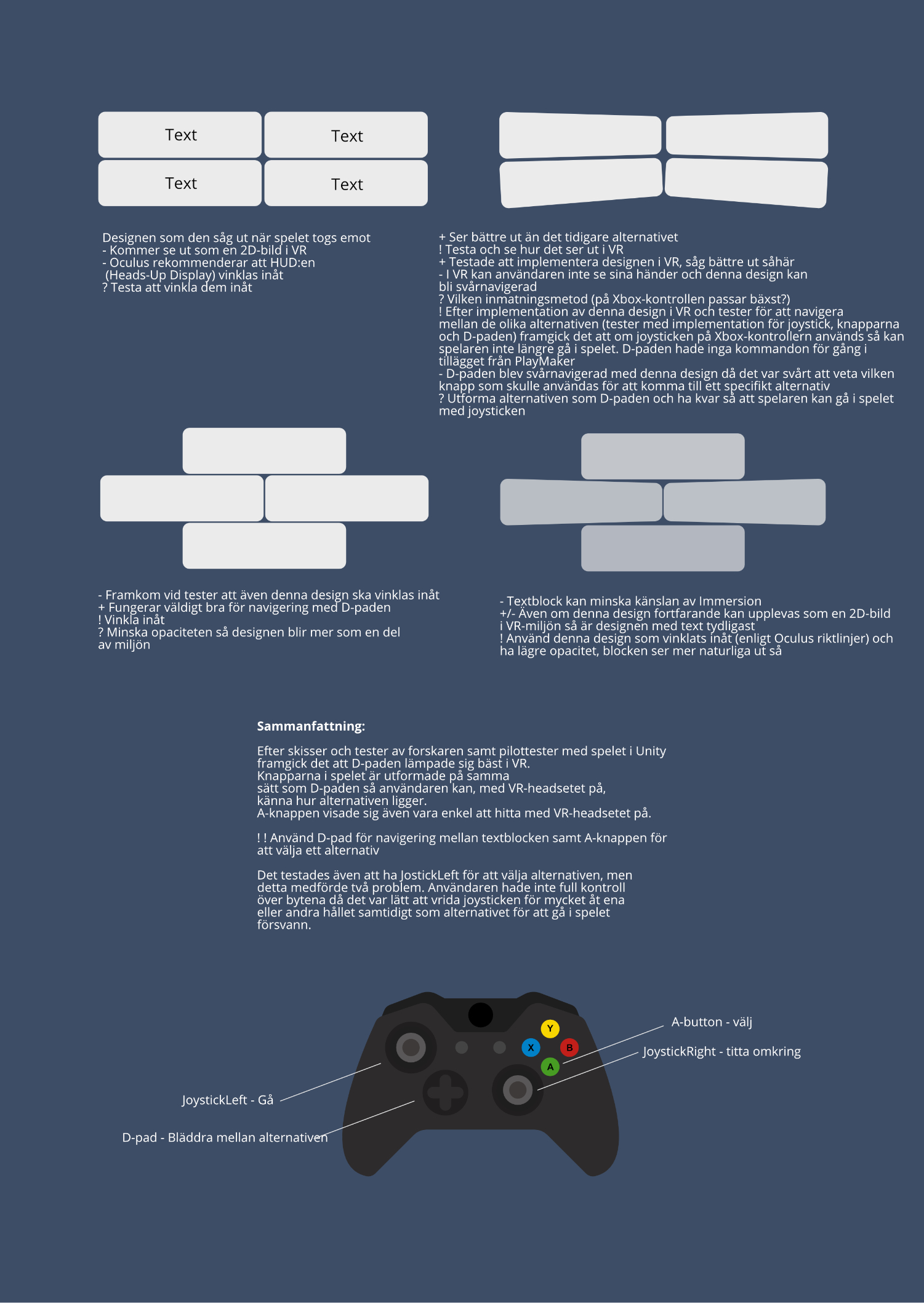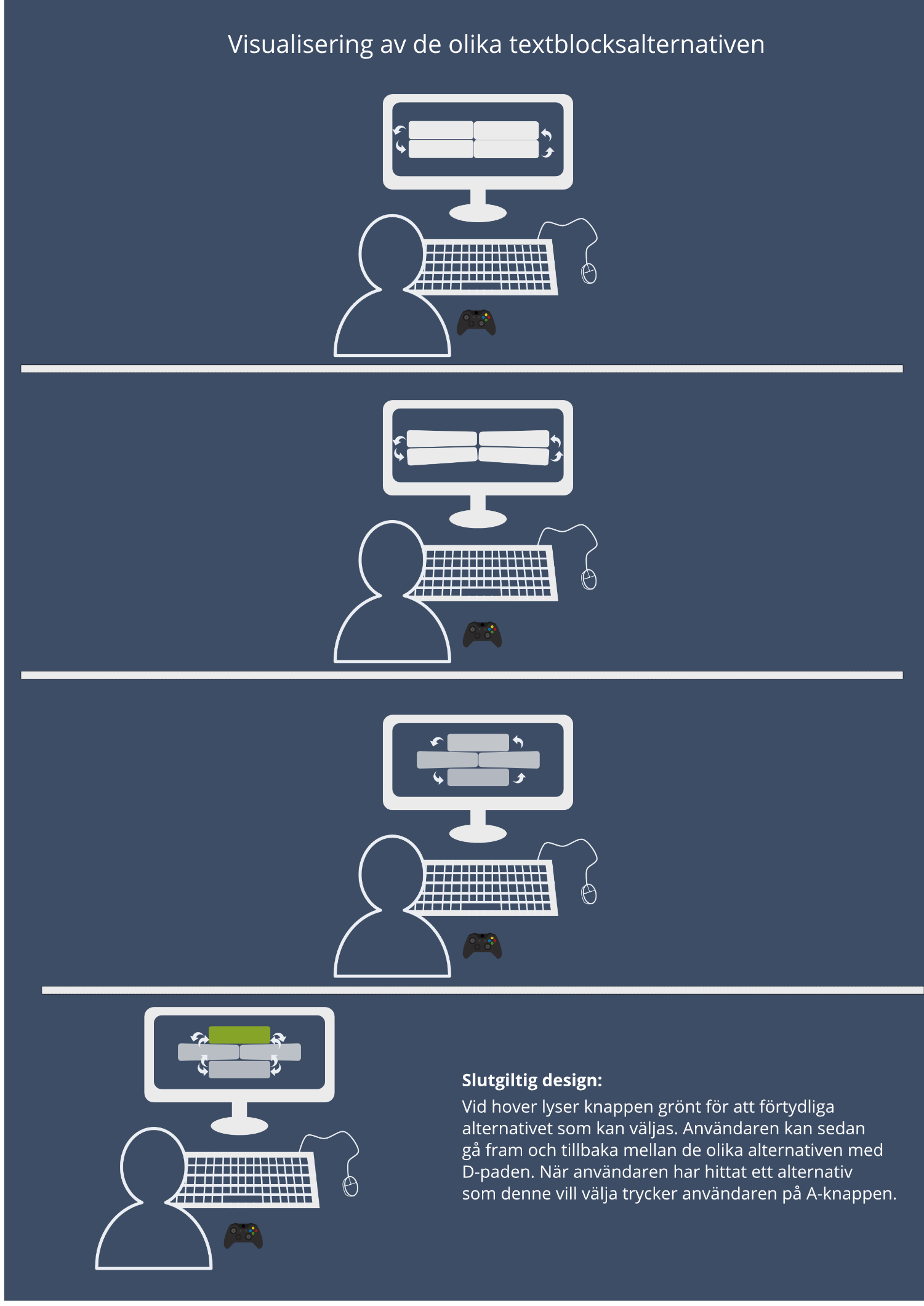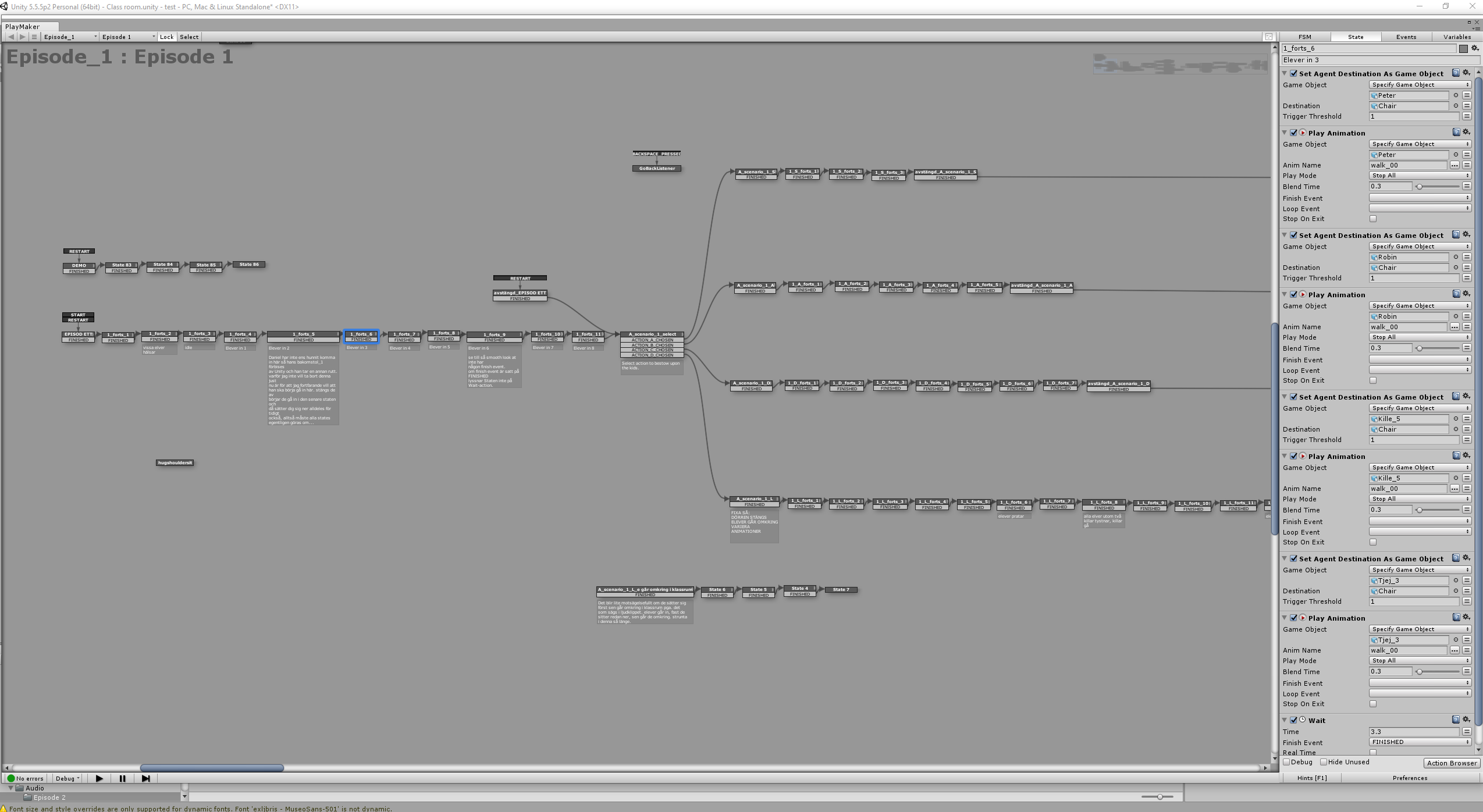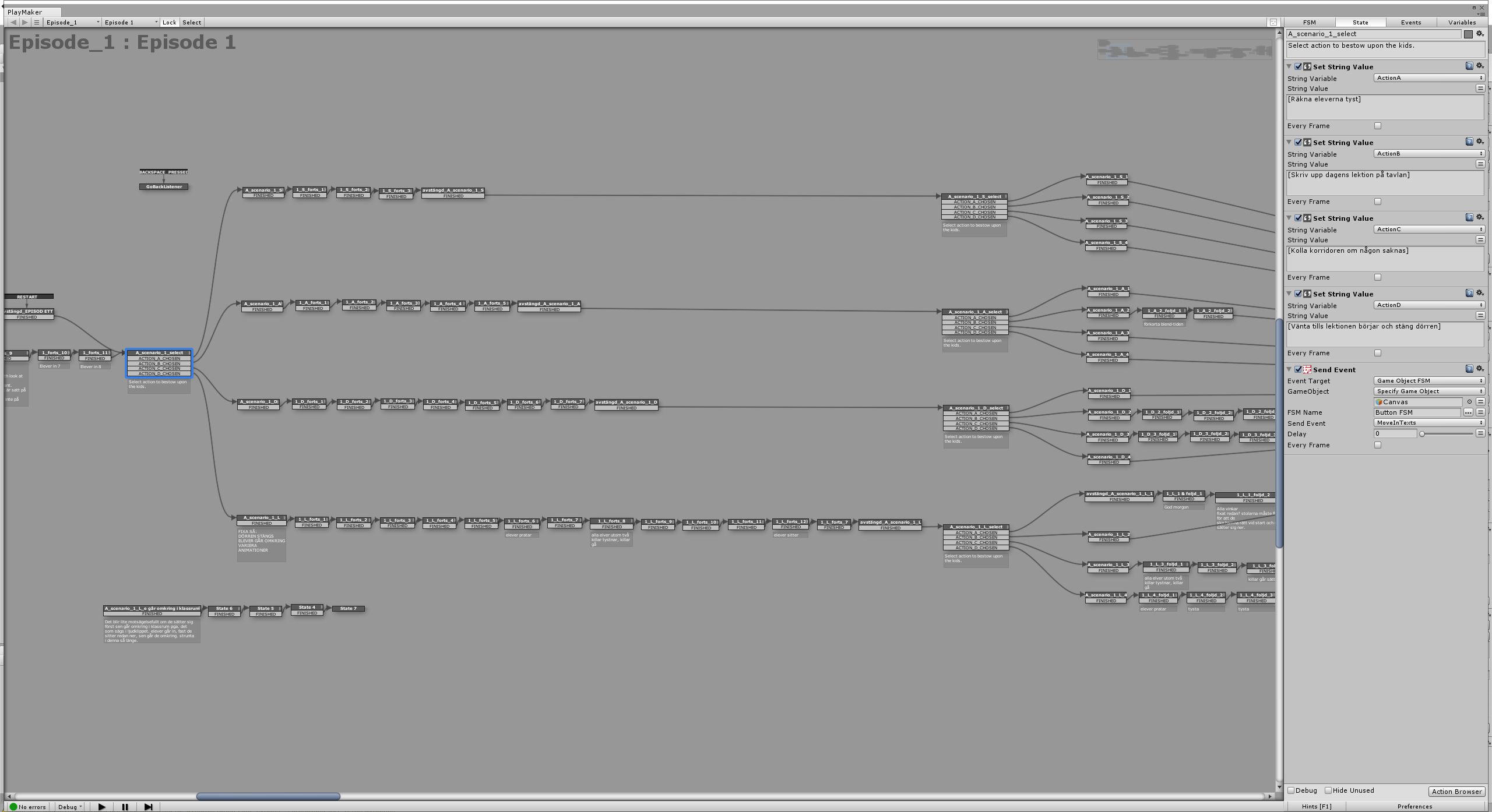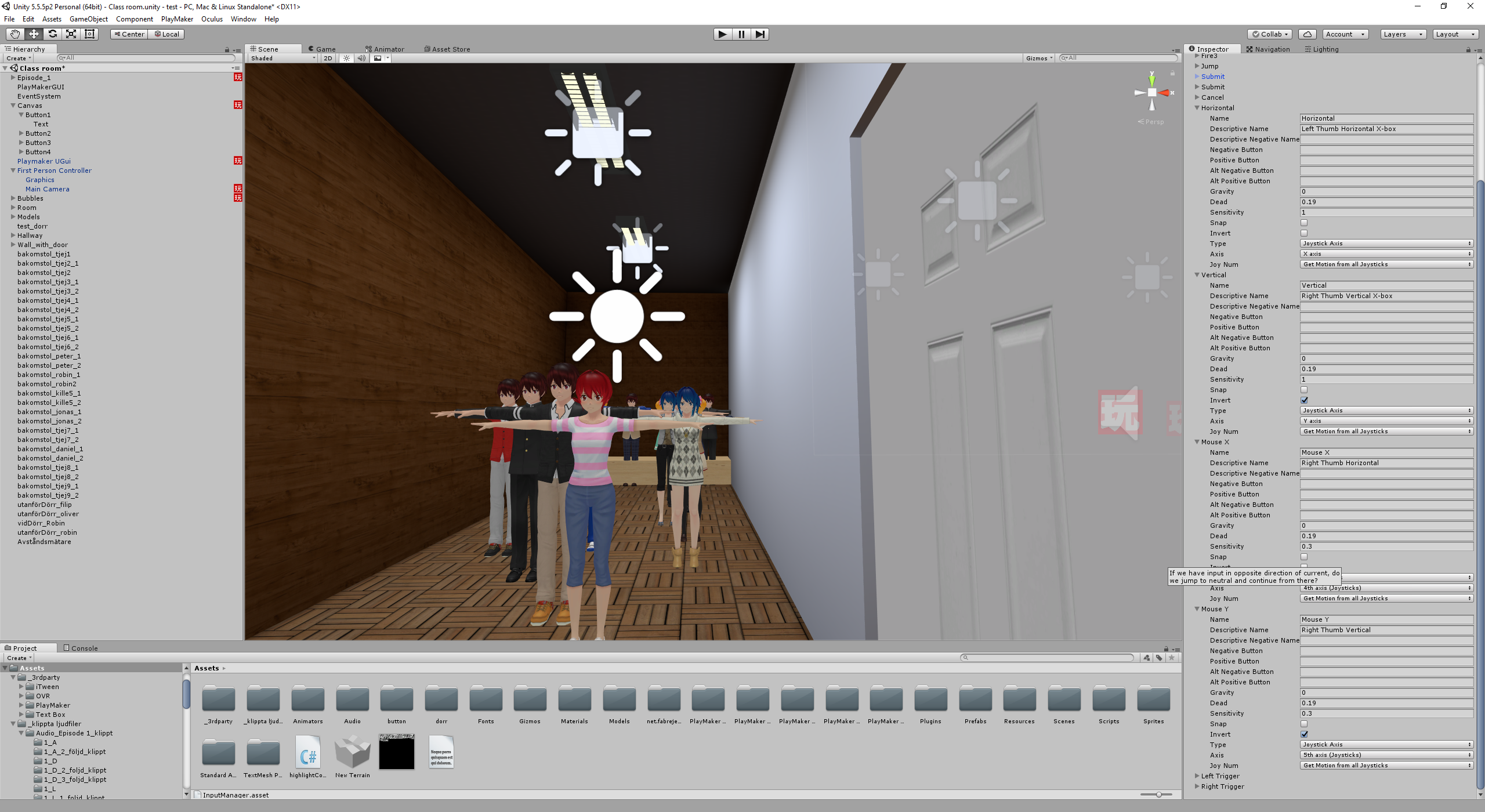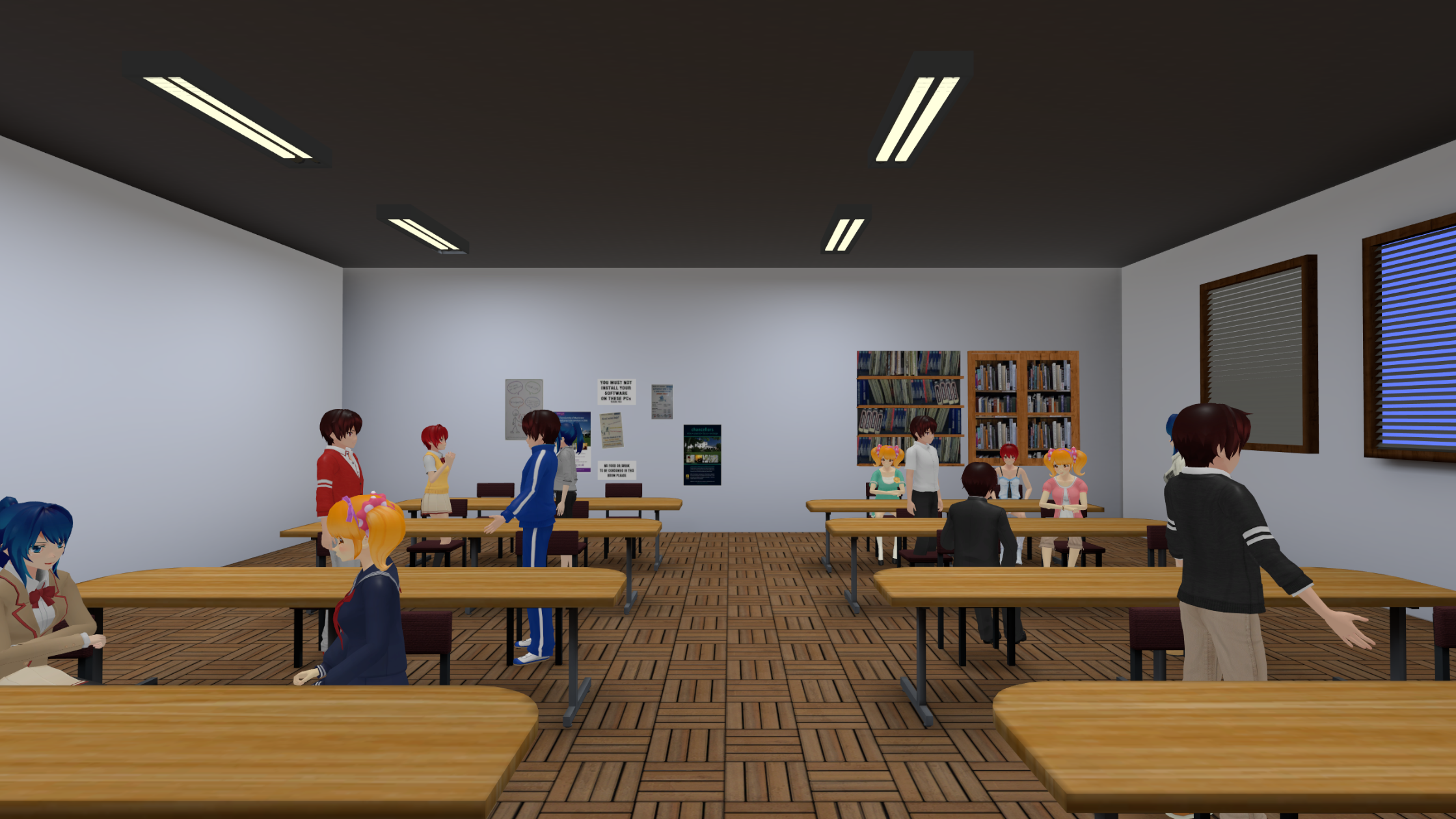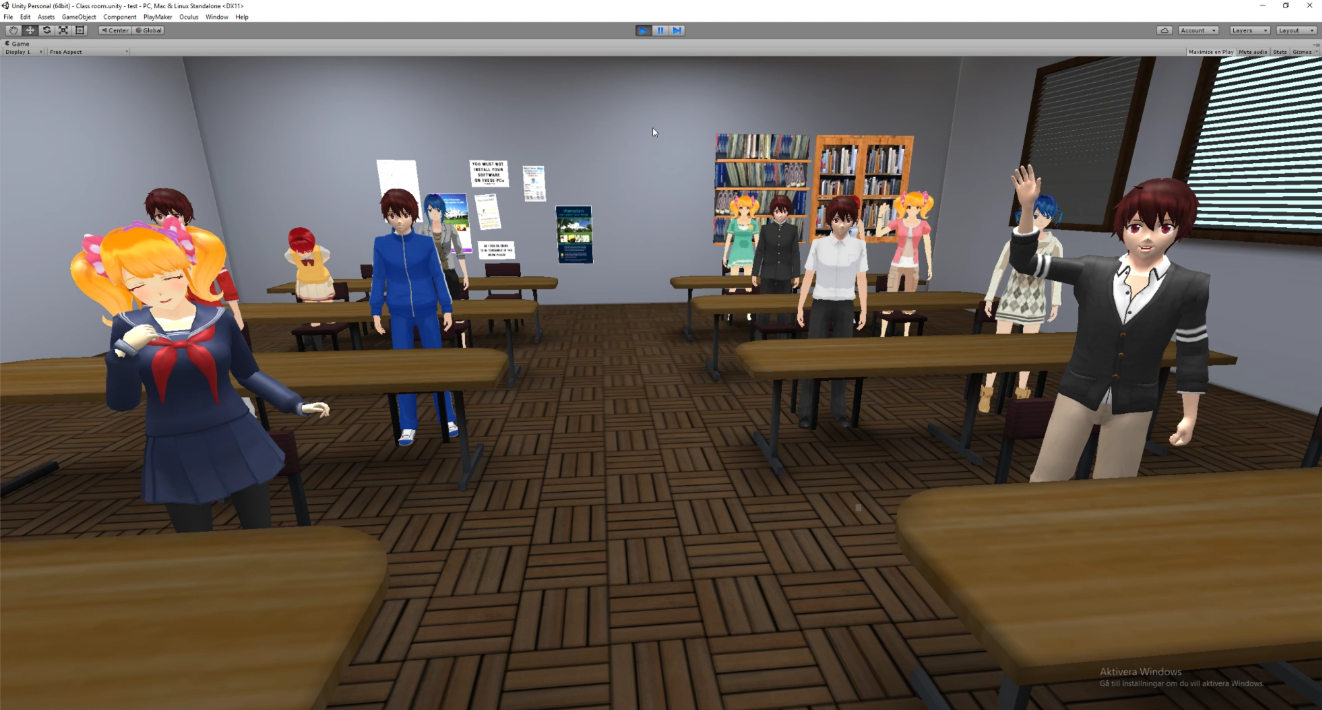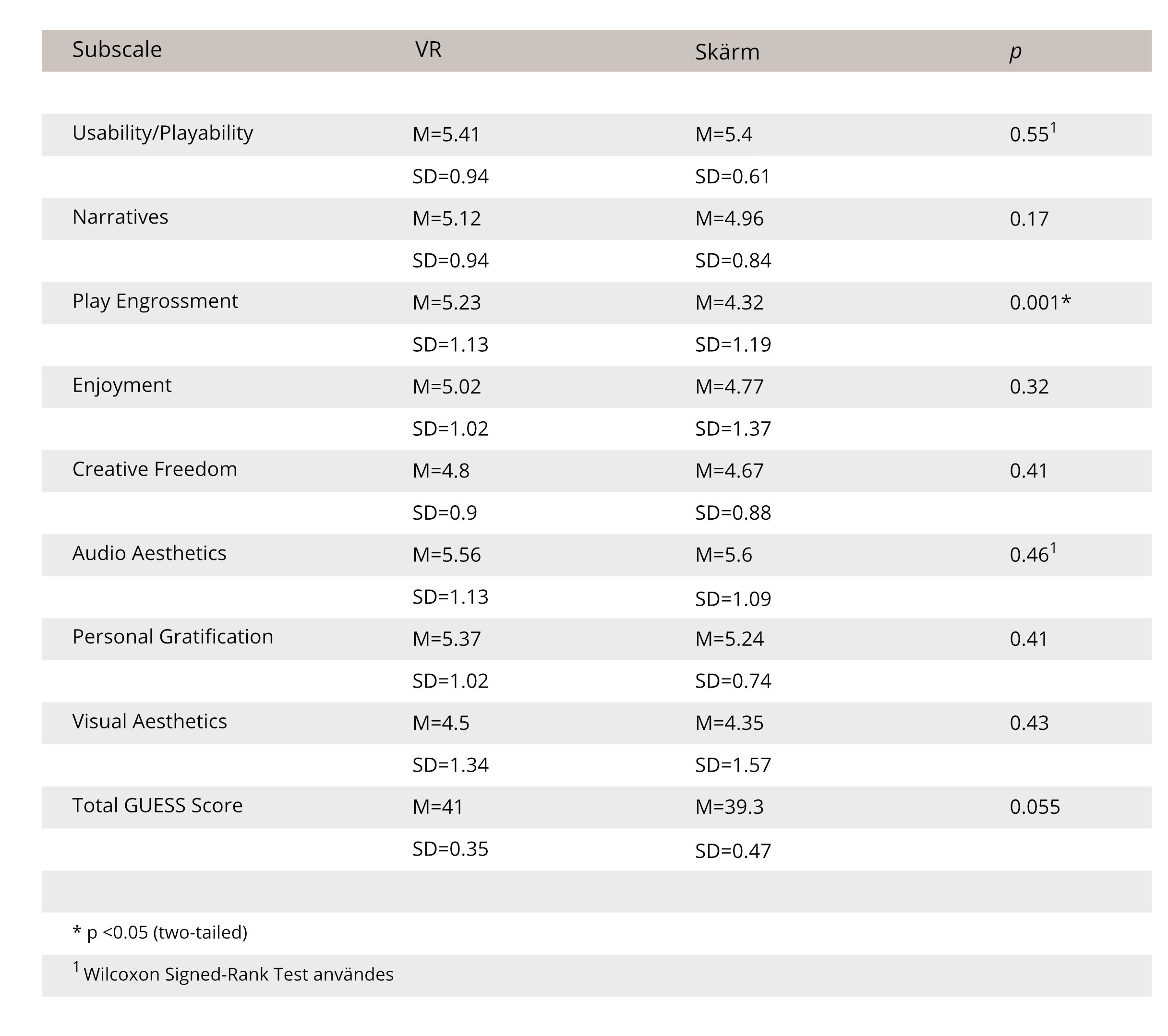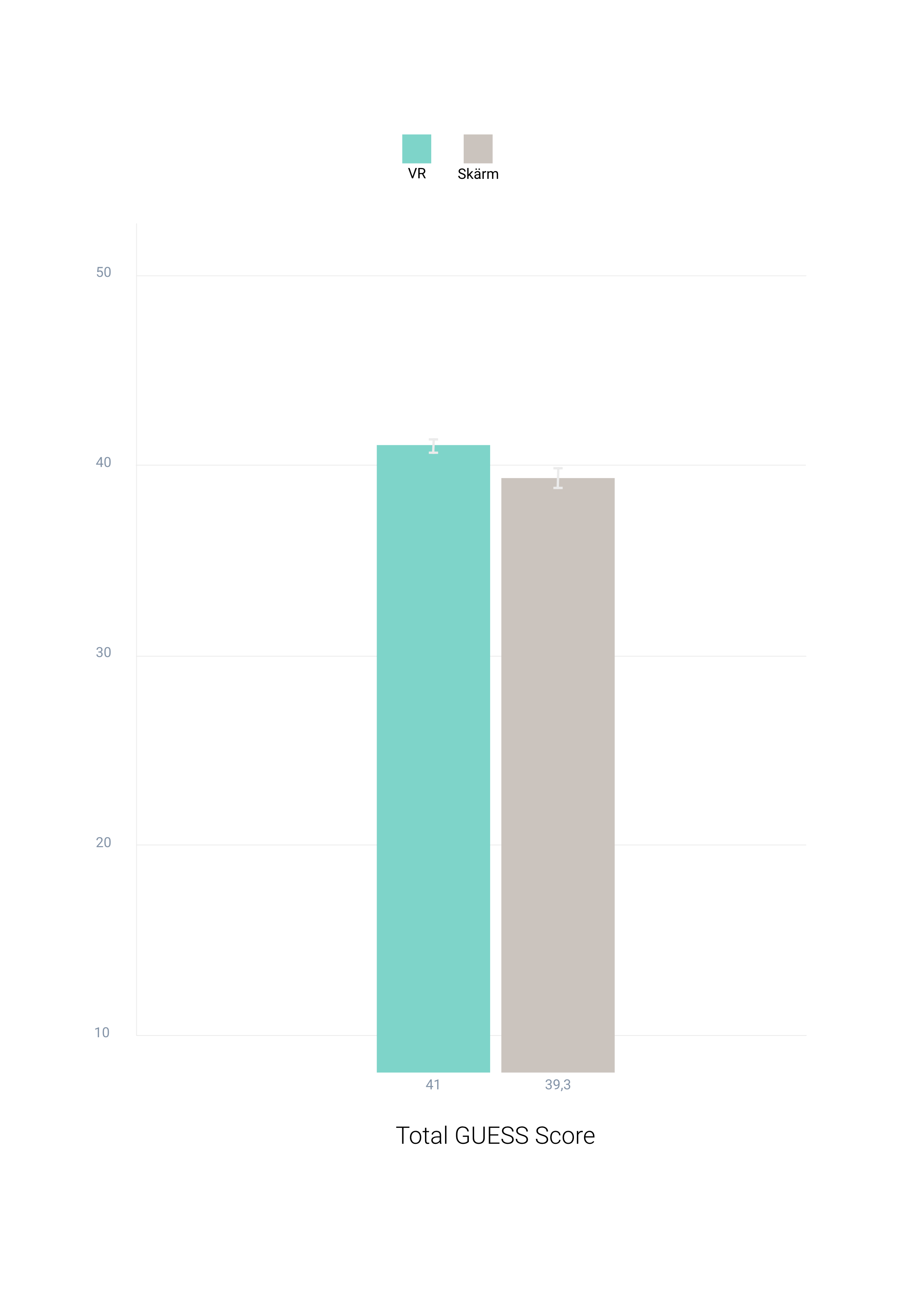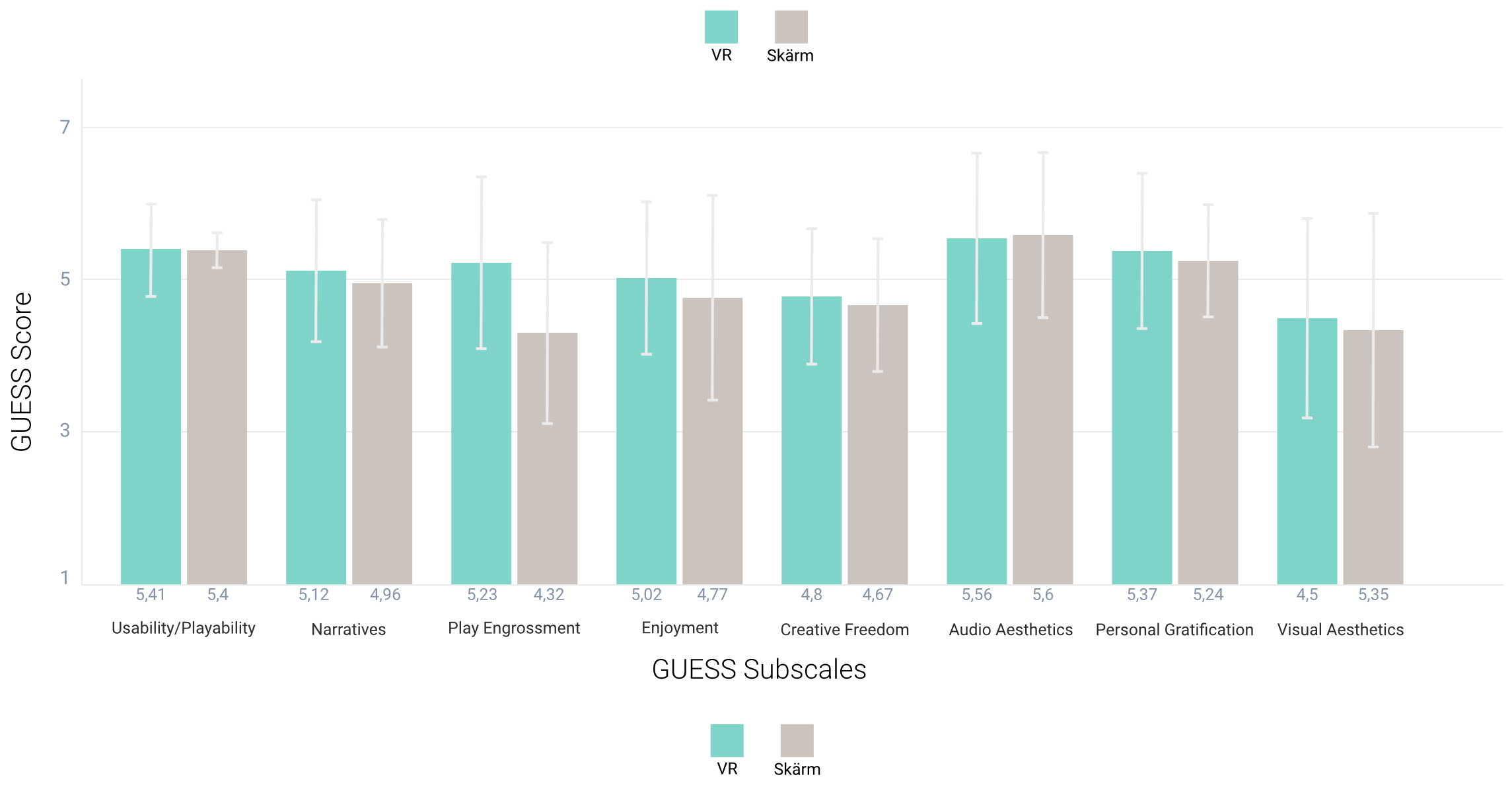

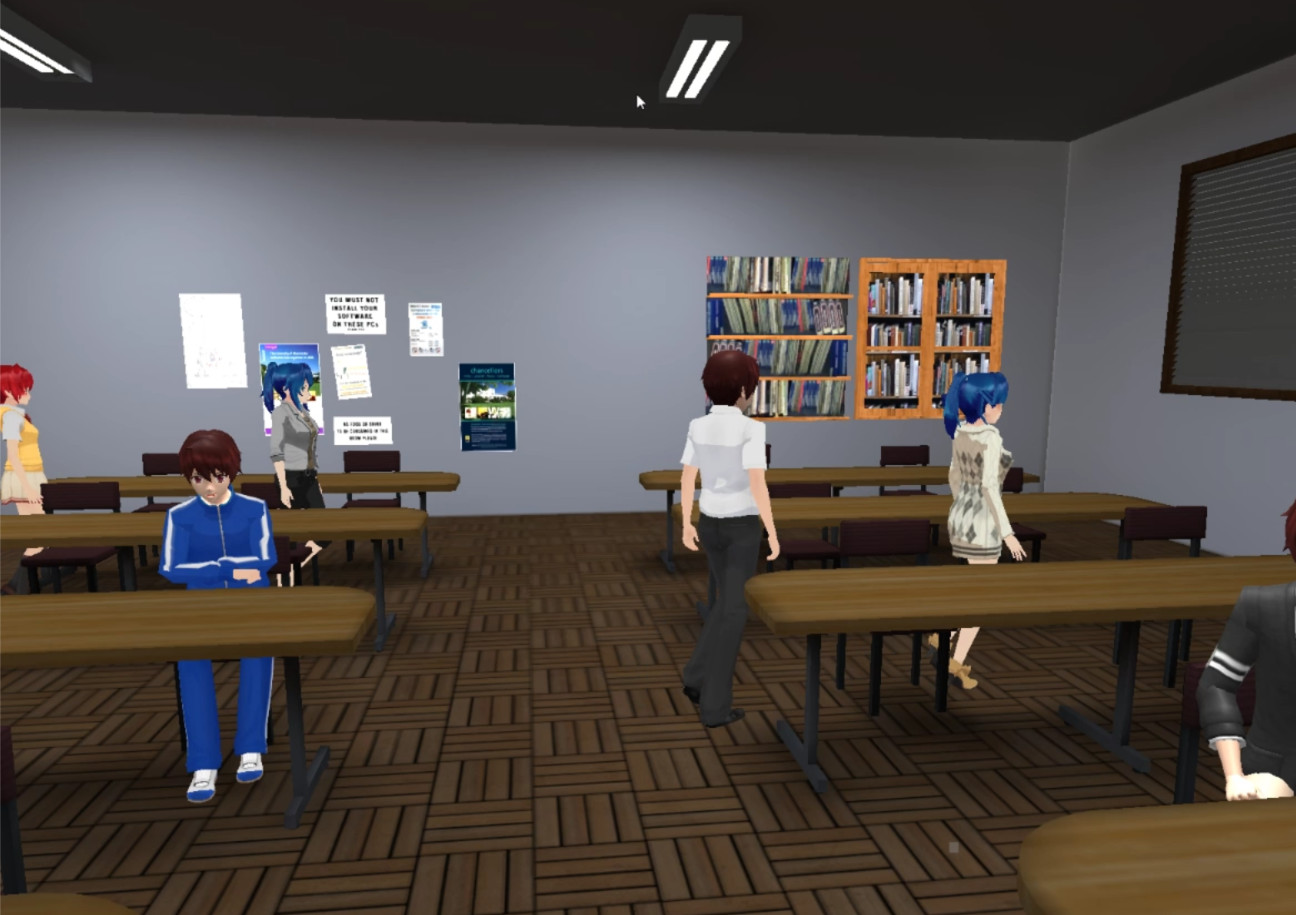
The aim of this Master's Thesis was to find out the difference in Game User Experience Satisfaction (GUESS) when using SimProv, both in VR (Oculus Rift) and on monitor. SimProv is a game-like classroom simulation. The purpose of this thesis was also to find potential problems that users may encounter during the test sessions. To assess and evaluate this, SimProv had to be furthered developed. This development was done using the game engine Unity and the visual scripting language PlayMaker in combination with following UI and UX design recommendations for VR games.
A within subjects design with 30 participants was conducted. The users played either the monitor version or the VR version first, with no particular order. After each play session participants were asked to fill in the GUESS-scale, which is a newly developed and psychometrically validated scale that consists of 9 subscales. At the end of the play sessions participants could choose to answer two questions, through a digital form, about potential problems they may have encountered in both modalities.
Since GUESS is a new scale few studies of evaluating VR versus monitor, using GUESS, have been conducted. The few studies that have been conducted showed no consensus in whether games should or should not be developed for VR. The inferential analysis with two-tailed paired samples t-tests in this study showed no significant difference between VR and monitor. The subscale Play Engrossment showed significant differences for VR. The text-based questions, that were analyzed with a thematic analysis, showed that the majority of the participants preferred VR. However, many participants felt that the answer options in the game where restricted.
Usability testing / UI & UX / VR / Visual Scripting / Game Design /Game Dev/ Unity / Oculus
